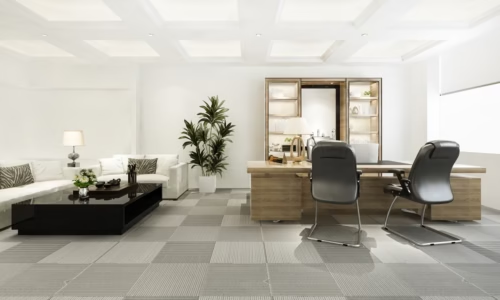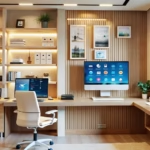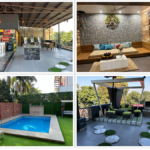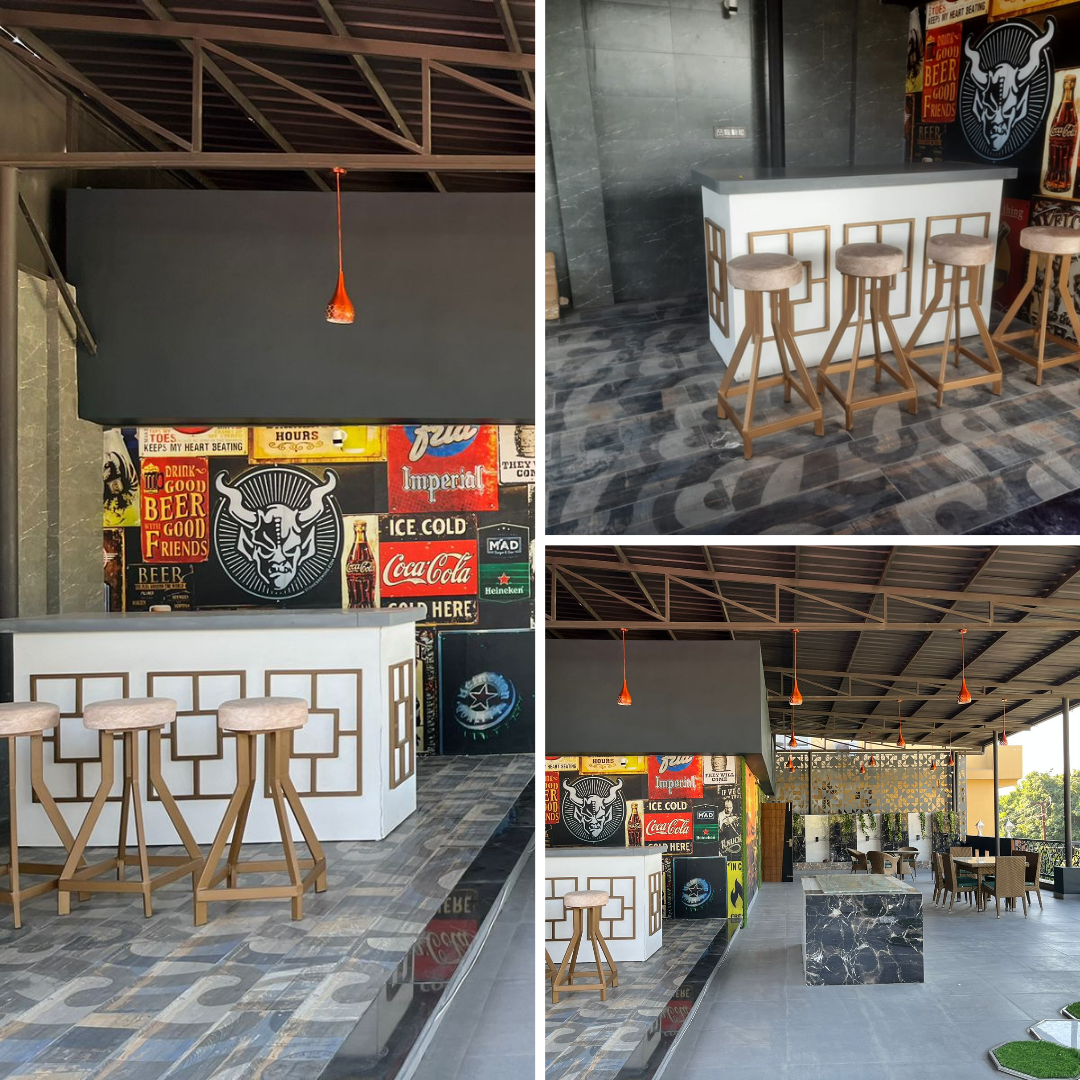When we think about office interior design, most of us picture furniture, lighting, color schemes, or open spaces. But one element that often gets overlooked is acoustics. Good acoustics play a crucial role in creating a comfortable, productive, and healthy workplace. In today’s modern offices, especially with open layouts, noise control is more important than ever. Let’s explore how acoustics affect office environments, why they matter, and what solutions can improve them.
What Do We Mean by Acoustics in Offices?
Acoustics refers to how sound behaves in a space — how it travels, echoes, or gets absorbed. In offices, this includes how employees hear conversations, background noise, or even the sound of machines like printers and air conditioners.
Poor acoustics can mean constant distractions, echoing voices, or a loud work environment that makes it difficult to focus. On the other hand, well-designed acoustics help balance sound so employees can concentrate, collaborate, and communicate effectively.
Why Are Acoustics Important in Office Design?
-
Boosts Productivity
Noise is one of the biggest productivity killers in offices. Studies show that it takes an average of 23 minutes for someone to regain focus after being distracted. With proper sound control, employees can work with fewer interruptions. -
Supports Employee Well-being
Constant noise is stressful. It can lead to headaches, fatigue, and even long-term health issues like anxiety or high blood pressure. Acoustic design creates a calm and supportive environment. -
Improves Communication
In meeting rooms, poor acoustics can cause echo or muffled voices, making it difficult for participants to understand each other. Good sound control ensures clear communication, whether face-to-face or in virtual calls. -
Maintains Privacy
Open offices can create challenges with confidential conversations. Without sound control, private discussions may easily be overheard. Acoustic solutions help maintain discretion in HR offices, meeting rooms, or private cabins.
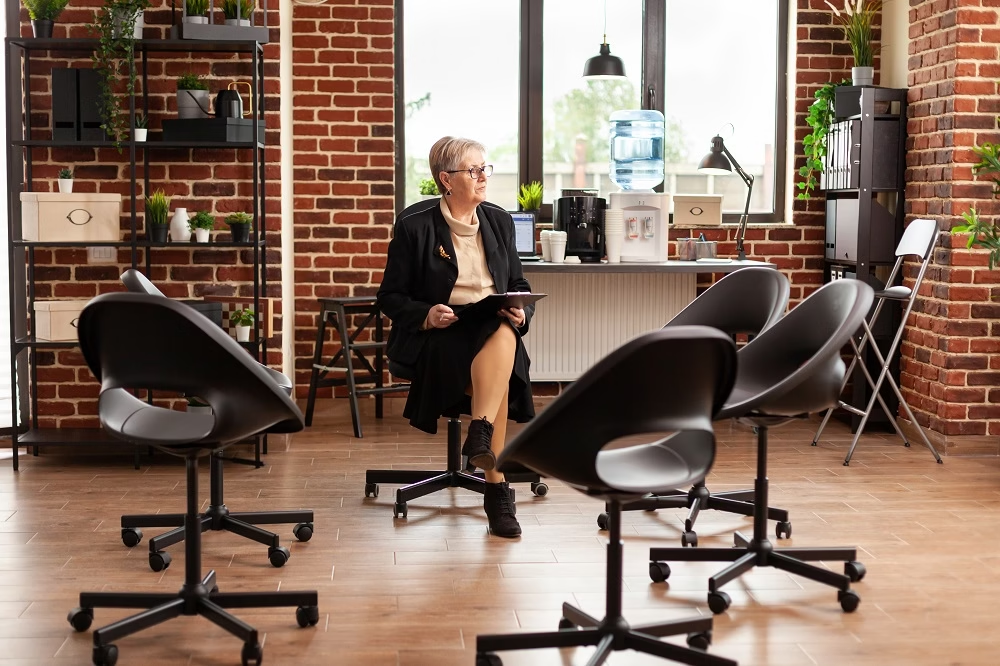
Common Acoustic Problems in Offices
-
Open-Plan Layouts
Open offices are popular for collaboration, but they often lack sound barriers. Conversations, phone calls, and typing noises spread quickly, leading to distractions. -
Hard Surfaces
Materials like glass walls, tiles, and concrete floors reflect sound instead of absorbing it, causing echoes. -
Lack of Acoustic Planning
Many offices focus on aesthetics and forget sound control, which leads to noisy environments once employees move in. -
Noise from Equipment
Printers, photocopiers, HVAC systems, and even coffee machines add to the background noise.
Elements of Acoustic Office Design
To solve these issues, designers consider several acoustic elements:
-
Absorption
Using materials like carpets, acoustic panels, or fabric furniture that absorb sound instead of reflecting it. -
Blocking
Adding partitions, walls, or furniture that prevent sound from traveling too far. -
Masking
Introducing soft background sounds, like white noise, that make other noises less noticeable. -
Diffusion
Using surfaces that scatter sound evenly rather than letting it bounce back in one direction.
Solutions for Better Acoustics in Offices
1. Acoustic Ceiling Panels
Ceilings are a large surface area where sound bounces around. Installing acoustic ceiling tiles or panels can reduce echoes and balance sound.
2. Wall Treatments
Acoustic wall panels, fabric walls, or even bookshelves can absorb and break sound reflections. They can be stylish too, adding texture and color to office walls.
3. Carpets and Rugs
Hard floors amplify sound, but carpets absorb footsteps and reduce noise. Adding rugs in common areas can also improve comfort and aesthetics.
4. Partitions and Furniture Placement
High-backed chairs, booth seating, and partitions help create sound barriers in open offices. Strategic furniture placement can minimize sound travel.
5. Acoustic Pods or Phone Booths
Small enclosed pods allow employees to take private calls or focus on work without disturbing others. These have become very popular in modern office designs.
6. Plants and Green Walls
Plants are natural sound absorbers. They break up sound waves and also improve air quality. A green wall can double as a decorative and acoustic solution.
7. Sound Masking Systems
These systems release a low-level background noise that reduces the impact of other sounds. This makes offices feel quieter even if they aren’t completely silent.
Acoustic Design for Different Office Spaces
Open-Plan Work Areas
-
Use carpets or rugs to absorb noise.
-
Install acoustic ceiling tiles.
-
Provide quiet zones or pods for focused work.
Meeting Rooms
-
Add wall and ceiling panels to reduce echo.
-
Ensure microphones and speakers are supported by good sound insulation.
-
Choose heavy curtains or blinds to soften sound reflections.
Reception and Waiting Areas
-
Use soft seating, rugs, and wall panels to keep the area welcoming and calm.
-
Incorporate background music or sound masking to cover noise from outside.
Private Offices
-
Soundproof doors and walls for confidential discussions.
-
Upholstered furniture helps absorb sound inside the room.
Benefits of Investing in Acoustic Office Design
-
Higher Focus and Efficiency
Employees spend less time getting distracted and more time being productive. -
Better Collaboration
Clearer communication improves teamwork and reduces misunderstandings. -
Employee Satisfaction
A calm and balanced office atmosphere improves morale and reduces stress. -
Professional Image
Clients and visitors experience a polished and professional environment when meeting rooms have clear sound. -
Long-Term Cost Savings
Acoustic solutions reduce the need for future redesigns or fixes and also improve employee retention.
Future Trends in Office Acoustics
-
Smart Acoustic Systems: Using AI to monitor noise levels and adjust sound masking in real time.
-
Eco-Friendly Acoustic Materials: Panels made from recycled materials or sustainable fibers.
-
Multi-Functional Furniture: Desks, cabinets, and partitions with built-in acoustic properties.
-
Hybrid Office Design: With remote and in-office work blending, acoustic setups for video conferencing are becoming essential.
Also Read:
- What Is a Mood Board in Interior Design?
- What Is Modern Classic Interior Design?
- What is Green Interior Design?
- What Are the Different Materials Used for Interior Design?
- Is Interior Architecture the Same as Interior Design?
Final Thoughts
Acoustics may not be the first thing you notice in an office, but it’s one of the most important factors for comfort and productivity. A well-designed office isn’t just about stylish furniture or modern layouts — it’s about creating a space where employees can thrive.
By investing in acoustic design, businesses can reduce distractions, improve communication, protect privacy, and enhance overall well-being. Whether you are designing a new office or upgrading an existing one, paying attention to acoustics will always be worth it.



